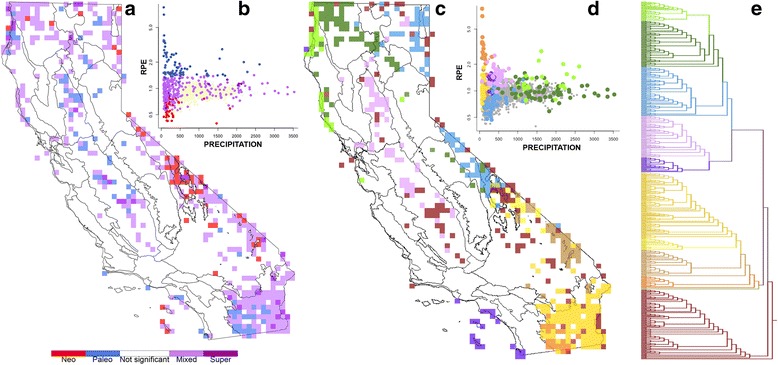Fig. 3.

Results of CANAPE analysis of all vascular plants, mapped with an overlay of the Jepson bioregions of California. a 15 × 15 km grid cells colored that showed significantly high phylogenetic endemism (PE) in CANAPE; red shows centers of neo-endemism, blue shows centers of paleo-endemism, and two shades of purple show two levels of mixed endemism. b A scatterplot showing annual precipitation versus relative phylogenetic endemism (RPE), colored to match the cells in a. c A range-weighted phylogenetic turnover analysis among cells that showed significant phylogenetic endemism in CANAPE. The colors indicate the corresponding clusters in e and show five major groupings. The primarily northwest cells (dark green) and northern coast cells (light green) together form a distinct cluster most similar to the Great Basin Desert cluster (light blue), while the northern Great Valley cells cluster (pink) with the Channel Island and south coast cells (purple). The desert cells form five distinct clusters (yellows, orange, browns). Many geographically dispersed cells did not form a distinct cluster (maroon). d A scatterplot showing annual precipitation versus RPE, colored to match the corresponding clusters in an Unweighted Pair Group Method with Arithmetic Mean (UPGMA) cluster analysis based on range-weighted phylogenetic turnover, colored to match the corresponding cells in c and d; cells that cluster together closely share similar branches in the phylogeny. Significantly high PE is concentrated in low precipitation environments, except for the northwest, probably indicating different processes affecting endemism in different lineages and in different locations
